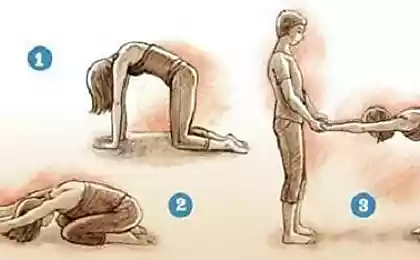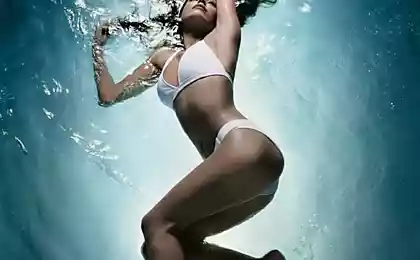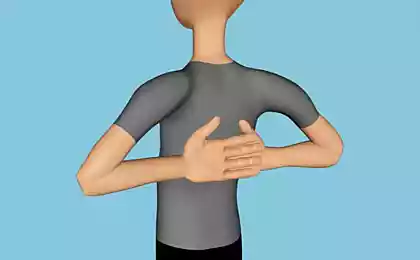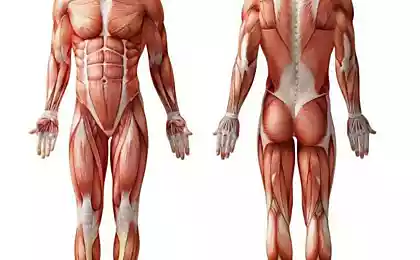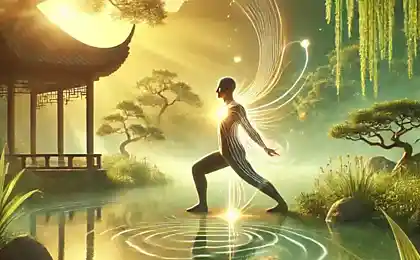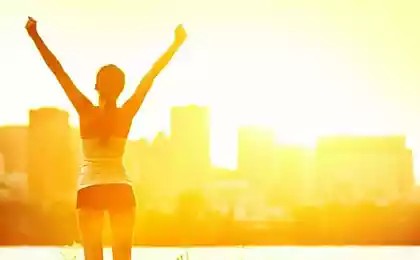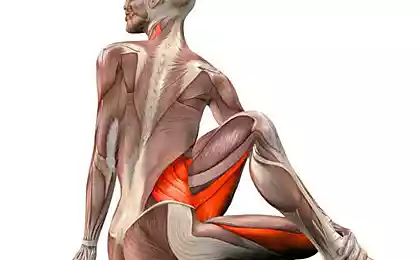385
9 threads: complex for back health Taijiquan

“Nine threads” (Ju Xian) is a set of exercises to warm up and structure the back. Eliminates and prevents kyphosis, lumbar lordosis, scoliosis, osteochondrosis.
It is recommended to perform “Nine threads” every day in the morning and evening.
Building the right (optimal) body structure in the practice of Taijiquan begins with breaking the wrong motor stereotypes while gaining flexibility.
http://li.ru/embed/5326509
The basis of human health is the back and spine. The back is difficult to change, and it takes a long time to build the structure of the back.
The main obstacle to working out the flexibility of the back is most often the excessive curvature of the spine in the thoracic region - thoracic kyphosis, in common parlance - hump, as well as the curved lower back - lumbar lordosis.
Also common is curvature of the spine relative to the central line - scoliosis, usually supplemented by various disorders in nearby tissues.
The primary task of the proposed health complex is to reduce these curvatures with the simultaneous study of intervertebral discs (prevention and treatment of osteochondrosis).
The work of liberating the back should be performed at least twice a day - in the morning and in the evening.
There is a special complex for such work, the optimal sequence of exercises which provides the fastest result.
“Nine threads” (Ju Xian – ев) is a set of exercises for warming up and structuring the back. It consists of 19 exercises, combined into nine parts, each of which is called a thread.
The Nine Strands Technique
The starting position is standing in the natural position of zijanshi ( ). The whole body is as relaxed as possible, muscle tone is minimal, just so as not to fall.
The first three threads have the common name "Three twists".
Top twisting. (First thread)It is designed to liberate the upper body with the help of twisting hand movements.
We begin to gently rotate the body, starting the movement from the arms bent at the elbows. Attention in the upper body is mainly in the thoracic spine (Figures 3 and 4).
Medium twisting (second thread). The upper twist is transformed into the middle (in the second thread) by pushing the pelvis forward and bending back.
This transition is made gradually, in a few twisting movements.
In this exercise, the plane of rotation of the hands changes by ninety degrees and goes to the frontal plane.
An additional requirement is to look at the heel opposite the side of the turn. Attention in the middle part of the trunk (Figures 5 and 6).
Third thread - bottom twist. Rotation in the lower torso is created by oppositely directed swings of the arms and the leg bent at the knee.
Experimentally select the optimal angles of folds in the elbow and knee joints.
Attention - in the lower back and sacrum region (Figures 7 and 8).
With a sufficiently intensive execution of the first three threads, a characteristic crunch in the spine can be heard - this is a normal phenomenon. But be careful: all movements should be strong, but not sharp.
This is the general rule for the entire Nine Strand complex.
The fourth and fifth threads constitute a semantic unity, symbolizing the unification of Heaven (the active energies of Yang) and Earth (the passive energies of Yin).
Fourth thread “Seeing the sky” is done at a slow pace.
First, we join hands in front of us in a straight lock (the bases of the palms are pressed against each other). It should feel like we are about to break the lock (Figure 9).
Then the straight lock is turned in reverse rotation (preserving the force of isometric rupture) and mutually stretch the arms and the seventh cervical vertebra (Daju point – 大ив, Fig. 10).
At this point, we begin to raise our straightened hands upwards (Fig. 11).
Next is the warm-up of the shoulder joints. When the hands are pushed back, the head is simultaneously pushed forward (Fig. 12).
The next action is vibration in the hands and body (Shen Qi Dong Dan - у) and pulling the whole body up (Fig. 13).
Next, throw your head back and look up, at this time you need to stand on your socks, tearing your heels from the floor (Fig. 14).
In the final phase, the head aligns (looking forward), and we land on our heels with a blow (Figure 15).
The wave from the impact should travel up the legs and reach the kidneys and the area of the minmen point (ам).
At the moment of contact with the heels of the floor, the hands are detached - this is the beginning of the fifth thread - "Worship the Earth."
Fifth thread "Worship the Earth." The hands under their weight relaxedly fall down and by inertia swing between the legs (the palms are directed upwards, the elbows are bent, Fig. 16).
Then there are swings of hands behind the back, first with a straight lock (the bases of the palms are pressed against each other, Fig. 17), and then with the reverse (note: rotation into the reverse lock is performed by shun, that is, in the opposite direction compared to the fourth thread, Fig. 18).
The sixth and seventh threads are also connected by a common meaning. Mountain energies are weakness within strength, and Valley energies are strength within weakness.
So,
Sixth thread - "Rectify the Mountain." This exercise prevents the formation of a hump and straightens the spine in the thoracic region.
With both fists (compressed into the form of a "tiger fist" - Huquan - им, Fig. 19) press on both sides of the spine so that the force from the hands is directed forward and up (Fig. 20).
The criterion for the correct vector in this exercise will be the involuntary desire of the heels to come off the ground (Fig. 21).
This exercise prevents the formation of a hump and straightens the spine in the thoracic region. With both fists (compressed into the form of a "tiger fist" - Huquan - им, Fig. 19) press on both sides of the spine so that the force from the hands is directed forward and up (Fig. 20).
The criterion for the correct vector in this exercise will be the involuntary desire of the heels to come off the ground (Fig. 21).
Seventh thread - "Lead the Valley." Capture soft tissue on the sides of the spine in the lumbar region between the bent index and thumbs. Next, create a pulling force back, trying to achieve a characteristic click from the spine. Do this action along the spine, moving down to the sacrum (Fig. 22).
Eighth thread“Big rolling” is the main thing in this complex. We can say that the previous seven threads freed the back for the correct execution of the eighth thread.
The eighth thread consists of three exercises.
The first is the spinning of the back and neck. It is produced in two stages. First, roll the back with bent knees (Figures 23 and 24). In this case, the spine is worked from the sacrum to the point of lintai ( - between the sixth and seventh thoracic vertebrae).
And then - rolling the back with straight legs - to work out the upper thoracic and cervical vertebrae (Fig. 25).
Characteristic clicks in the spine are a sign of the correct execution of this exercise.
The second exercise of the eighth thread is great stretching. It is based on the opposite directional stretching of the upper and lower parts of the trunk through the arms and legs (Figure 26).
.
The fingers of the hands take the form of a “beak” (four fingers are collected in a pinch, the little finger presses them next to them), the wrists are pressed against the floor (Fig. 27). By bending the elbows, the trunk is pulled towards the head.
The socks are stretching on themselves. Then the heels are pressed against the floor (Figure 28). Pulling the socks of the legs with the heels pressed to the floor creates an effort that pulls the trunk down to the legs.
Combining the efforts of the hands and feet and adding a third – the intention to press the lower back (the area of the minmen point) to the floor, we get the correct execution of the exercise “Big stretching”.
The third exercise of the eighth thread – “Full pulling of all parts of the body” – is the culmination of the whole complex. With a strong breath and subsequent breath holding, we turn the whole body into a kind of strained string - from the tips of the fingers and crown to the tips of the toes (Fig. 29). Vibrational waves should pass throughout the body (Shen Qi Dong Dan - м), which feel like an orgasmic wave. At the same time, we make sure that the body does not bend, and for this we create an intention to press the waist to the floor. After comfortable holding the breath, we exhale and completely release the whole body to relax.
Ninth threadcompletes the complex. Its purpose is to collect influences obtained as a result of the practice of previous forms.
The ninth thread consists of five exercises.
The first is rolls on the back (Fig. 30). To perform, you need to press the chin to the chest and grab the feet with your hands so that the middle fingers press the yongquan points (х - on the soles of the feet).
The second exercise is relaxing the back by putting your legs behind your head (Figure 31). The hands are first in a straight lock (the bases of the palms are pressed against each other, Fig. 32).
Then the lock is turned in reverse (as in the fourth thread). In the hands - isometric tearing force (Fig. 33).
The third exercise is reverse rolling (Fig. 34). We form rings from the index, middle and thumb and cover them with the thumbs (Fig. 35).
Slowly shift the center of gravity to the pelvis, rolling the vertebra behind the vertebra from the neck to the sacrum (Fig. 36-38). Finally, two to three times raise and lower the head, relaxing the cervical vertebrae (Fig. 39).
The next exercise is rotation of the head, first in a clockwise and then counterclockwise.
The palms are located on the sides of the trunk, thereby providing maximum relaxation of all muscles of the shoulder girdle (Figures 40-42).
The final form is a sitting twist. First, we grab the right ankle with our left hand (note: for safety purposes, the elbow must be twisted along neither and directed upwards), and then we intensively twist the body to the right.
The right hand helps to stretch the spine, supporting and pushing the trunk upwards (Fig. 43).
Then perform a symmetrical twist to the left side (Fig. 44)
This is where the Nine Strings Exercise Complex ends.
Exercise List Nine Strands
For practical use, a complete list of the Nine Strings exercises, containing some clues useful when learning.
01. Three twists:
1. the top (to look back);
2. average (with a deflection backwards);
3. lower (with the removal of the leg).
02. Sky and Earth:
1. to see the sky (locks, straighten shoulders, shake and socks);
2. worship the earth (fall, locks, swing hands).
03. Mountain and Valley:
1. to correct the mountain (crush the hump);
2. to level the valley (to pull the deflection).
04. Eighth Thread:
1. rolling (with bent knees, with straight legs);
2. stretching (hooks of hands and feet);
3. stretching (with breath retention).
05. Ninth thread:
1. rolling back (middle fingers on yongquan);
2. open the back (legs behind the head);
3. reverse rolling (rings from the fingers to the thumbs);
4. rotation of the head (clockwise and against);
5. twisting (right and left).
Medical Aspects in the Nine Strings Practice
From the point of view of mechanics, the vertebral column is a multi-link system, the verticality and strength of which is ensured by a system of stretch marks (like cables holding the mast of a sailing vessel or slings holding a radio antenna).
The role of these stretch marks is performed by the muscular-ligamentous apparatus, primarily the vertebral column itself. Being in constant tonic tension, they provide stability and, at the same time, mobility of the spine.
The Nine Strands complex is primarily aimed at this system in its impact, and also provides a soft entry of the body after morning sleep into the active mode phase.
In this complex, through dynamic and isometric contractions, three main therapeutic mechanisms are involved:
1. muscle relaxation;
2. self-mobilization of vertebral-motor segments;
3. strengthening the muscle-ligamentous apparatus.
From the point of view of neurophysiology of movements, the Nine Strands complex is aimed at knocking down the pathological (defective) stereotype of movement and holding the posture due to mobilization techniques and a powerful proprioceptive flow from the periphery to the CNS.
It should be noted that the defective stereotype is characterized by a specific appearance - hyperlordosis of the lower back, kyphosis of the thoracic region, raised or pushed forward shoulders, a curved neck.
As an example, we can give a secondary syndrome of pathology of motor stereotype, which occurs in women when wearing high heels.
From the traditional point of view, the practical goal is also aimed at straightening (smoothing) the lumbar and cervical lordosis. The complex is an introductory exercise for building the structure of the body.
Unlike many other mobilization techniques (morning gymnastics, light running, etc.), the Nine Thread complex allows you to gently and effectively enter the state of activity after a morning sleep.
And performing this complex before bedtime allows you to achieve the desired effect - preparation for a full rest (recovery) after a busy day.
Practice has shown that, performing daily (morning and evening) complex Nine threads, you can successfully achieve the optimal combination of the most effective recovery during sleep and fairly rapid preparation for active movements after sleep.
Is it possible to perform "9 threads" with herniated intervertebral discs?
Yes, you can, but only very carefully.
At the initial stage, do not all exercises, but only those that align the spine (without twisting). The most suitable for this are threads 4 and 5, 8 and 9.
And even in these threads, the load should be gentle, without jerks, on a softer than usual surface. In the 8th thread, focus on pulling (parts 2 and 3), and in the 9th on rolling on the back (1st part). When the pain begins to recede, you can do the whole complex, also starting with gentle loads, gradually increasing them.
Vadim Zeland: How to lead your energy in a healthy condition
You NEED to meet relatives at the airport!
